Discover Unique and Functional Tiny Home Plans
Embark on a journey of creativity as you explore tiny home plans that blend uniqueness with practicality. For those intrigued by tiny house living, these thoughtfully designed blueprints provide an effective foundation. With a focus on affordable tiny homes, you’ll discover that maximizing space doesn't mean sacrificing style or functionality. Tiny house interior designs transform compact spaces into cozy, inviting havens. Whether you’re searching for tiny house on wheels plans or static foundations, each set of plans comes with comprehensive guidance. This ensures a smooth process on how to build a tiny house, from initial concepts to final touches. Dive into tiny house design ideas, uncovering best tiny house kits that simplify the construction experience. As you explore these tiny home designs, you’ll find inspiration tailored to diverse tastes and needs, fostering an environment where creativity and practicality coexist seamlessly.
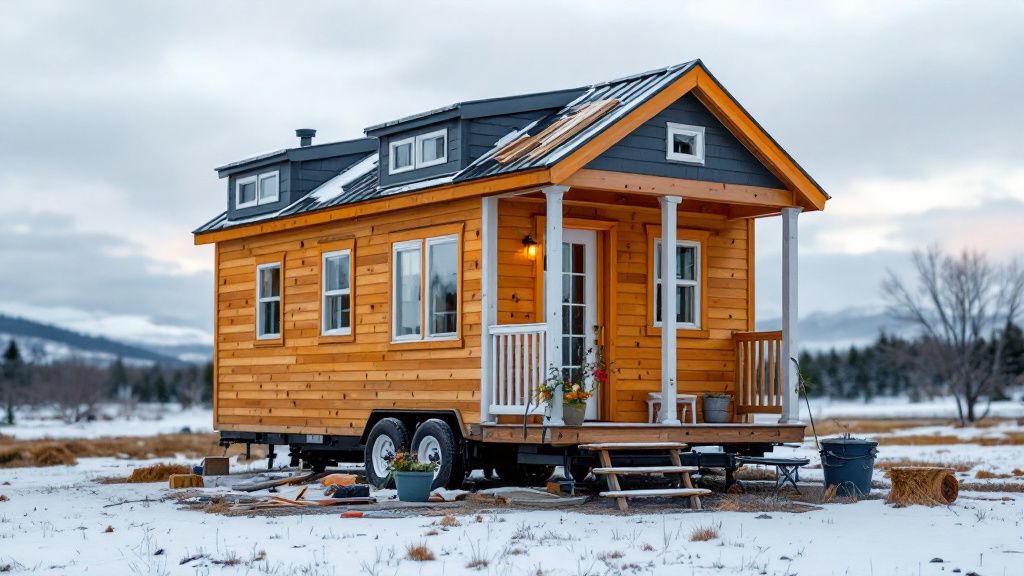
Understanding Tiny Home Regulations
Understanding the regulations surrounding tiny homes is essential to turn your dream into a reality. Local zoning laws and building codes vary significantly, and navigating these successfully involves embracing a new perspective. Transitioning from traditional housing norms to appreciating the flexibility of tiny house living requires a mindset shift. By approaching tiny home construction plans with openness, you can successfully adapt to these legal frameworks.
When planning your tiny house on wheels or a fixed tiny home, familiarizing yourself with local regulations is crucial. Many regions have specific rules about minimum square footage, utility hookups, and loft space dimensions. Understanding these guidelines ensures that your affordable tiny home meets all necessary legal requirements, avoiding potential legal issues.
You also need to consider where you’ll place your tiny home. While some areas are becoming more welcoming toward tiny house neighborhoods, others have restrictions that could affect your plans. Being prepared with tiny home blueprints and consulting with local authorities can smooth the process, bringing your unique tiny house interior designs to life effectively.
Adapting to these regulations is key to a stress-free construction. This ensures that your build complies with legal standards while allowing you to enjoy your dwelling's innovative and bespoke tiny house design ideas. Understanding these legal landscapes can make the homebuilding journey more seamless, ensuring that every aspect of your dream home is realized.
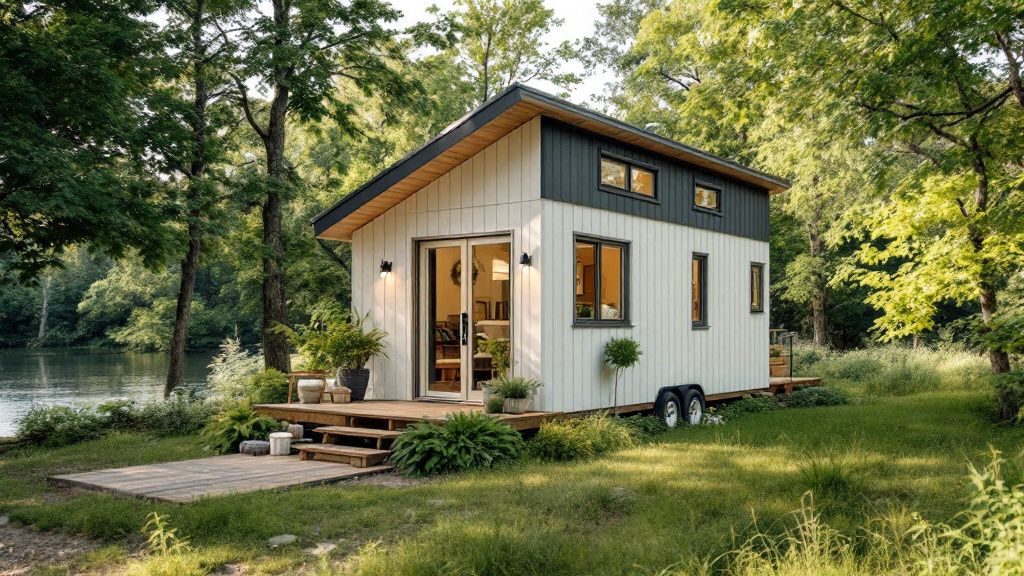
Choosing the Right Tiny Home Layout
Efficiently selecting a tiny home layout is crucial in optimizing every square foot for both comfort and functionality. With numerous tiny house design ideas to explore, your choice should reflect your lifestyle needs and personal style. Consider whether you prefer a lofted bedroom for a cozy, elevated retreat, or a ground-level sleeping area for convenience. Your living space should seamlessly integrate with daily life, ensuring it supports efficient tiny house living.
Focus on creating multipurpose areas that can transform based on your activities. A compact kitchen might double as a workspace or social area. According to recent studies, well-designed spatial arrangements encourage efficient use of small spaces, which can significantly improve satisfaction and usability in tiny homes. This scientific explanation suggests that intentional planning directly impacts your living experience.
Investing time in layouts that promote flow can aid in a smaller space's adaptability. Using tiny home blueprints to visualize your space helps solidify your decisions before construction begins. Whether opting for tiny house on wheels plans or other configurations, contemplate how each room transitions into the next. Your chosen layout will serve as the blueprint for transforming your tiny house into a home that feels both expansive and welcoming.
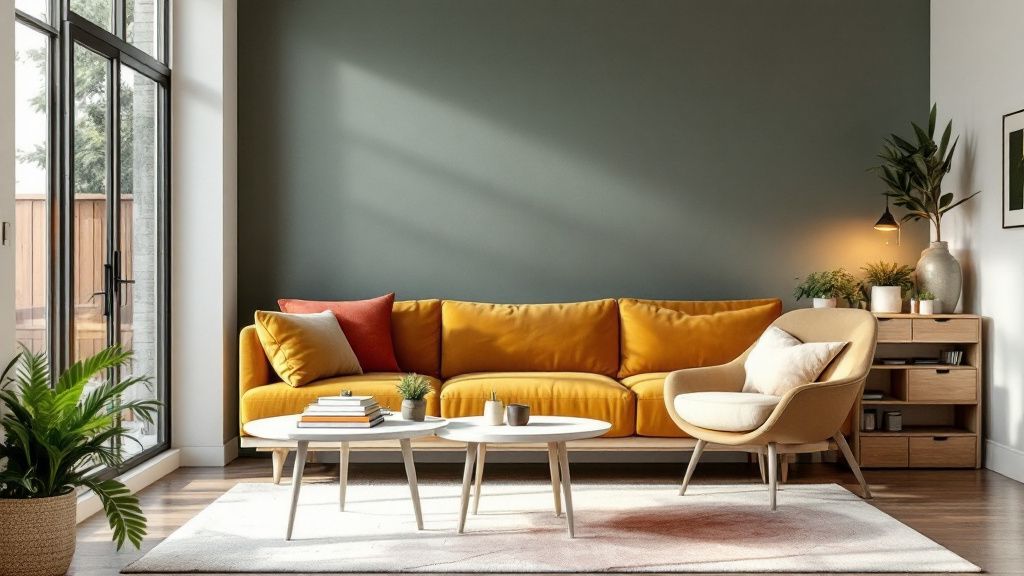
Incorporating Multifunctional Furniture
Incorporating multifunctional furniture is essential to maximize the versatility of your tiny home interior designs. With space at a premium, smart furniture solutions such as convertible sofas, tables that extend out from the wall, or storage beds are crucial. These options offer dynamic functionality without compromising on comfort. Keeping balance in mind, such furniture helps you achieve efficient tiny house living while maintaining style and coziness.
Carefully selected tiny house design ideas that include multifunctional furniture will allow your tiny home to reflect personal taste while addressing storage and spatial needs. Invest in pieces that cater to various activities throughout the day. For instance, a work desk that transforms into a dining table enables space-saving measures that fit seamlessly into your daily routine.
In the coming years, the trend of innovative multifunctional furniture in tiny home designs is likely to redefine small space living across the globe. As more people embrace sustainability and minimalist lifestyles, expect to see a surge in creative furniture solutions that meet those goals. Such advances will enhance the practicality and allure of affordable tiny homes, encouraging more individuals to adopt these efficient living arrangements.
By integrating multifunctional furniture into your tiny home construction plans, you ensure that your living space remains adaptable, stylish, and comfortable. The flexibility of these designs supports both current needs and future changes, promising a home that grows and evolves with you.
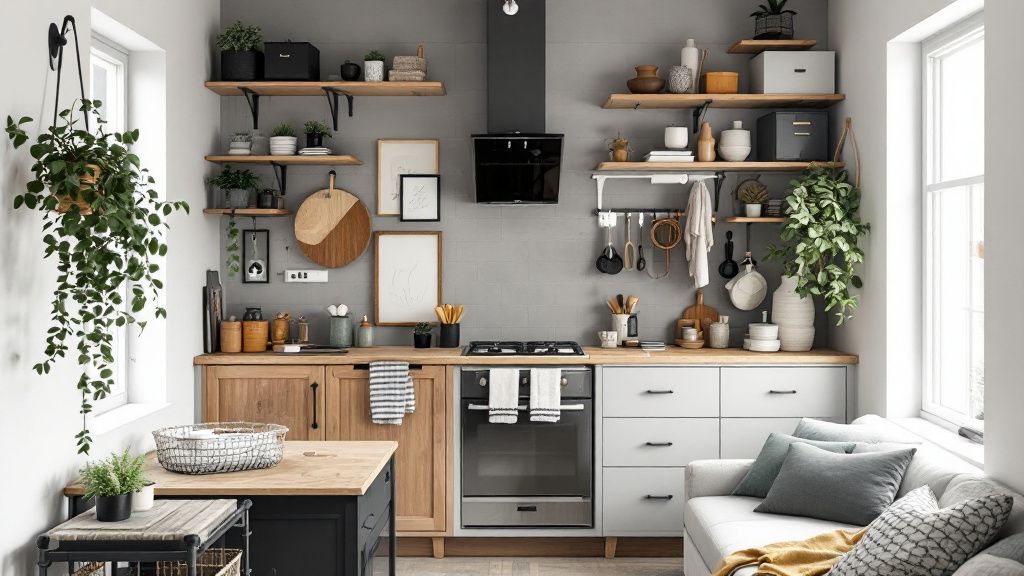
Designing for Vertical Space Utilization
What role does designing for vertical space utilization play in transforming tiny home living? Maximizing vertical space is pivotal in enhancing the functionality and aesthetic of compact spaces. By creatively using height, you can transform cramped areas into open, airy retreats. Vertical solutions offer ample opportunity for storage, display, and living arrangements, ensuring that every inch of your affordable tiny home contributes to a sophisticated, efficient lifestyle.
Incorporating shelves, hanging storage, and floor-to-ceiling cabinetry helps utilize every bit of height available in tiny home designs. These elements provide essential storage options without encroaching on valuable floor space. Implementing such design choices supports a lifestyle free from clutter, thereby making your tiny house interior designs as appealing as they are practical.
Focusing on tiny house design ideas that embrace vertical space allows for the smooth integration of dual-purpose furniture and appliances. Multi-tiered shelves or vertical pantries can significantly enhance kitchen areas, while lofted beds free up floor space for other uses. In tiny house construction plans, considering vertical design from the outset ensures that your build makes the most of available space.
For those exploring how to build a tiny house, utilizing vertical space is a key strategy for blending innovation with cost-effectiveness. Vertical design principles are not just for fixed structures; tiny house on wheels plans can also greatly benefit from adopting these ideas. Doing so ensures that moving homes maintain their utility and style despite their limited footprint.
In essence, designing for vertical space is an essential aspect that influences how customizable and personal your tiny home can be. By focusing on height as a dimension as important as width or depth, you transform the way space is used. This approach makes the best tiny house kits and tiny home blueprints more effective, offering a welcoming, versatile living environment that feels both spacious and intimate.
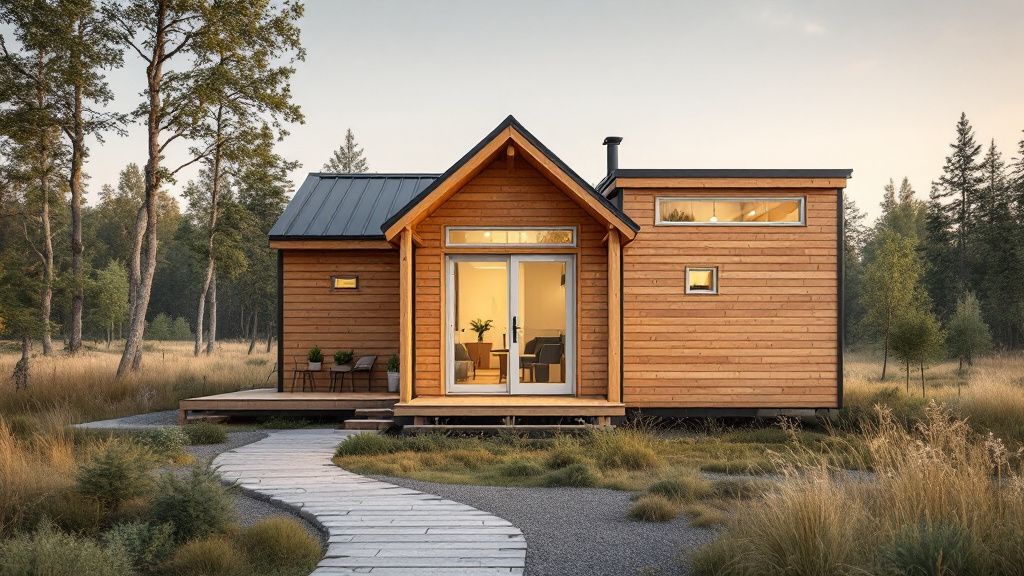
Tiny Home Kit Options
Exploring tiny home kit options opens up a world of possibilities for personalized living spaces. These kits come with essential materials and instructions, making the journey of constructing your own tiny home accessible and straightforward. They appeal to those who value both control and convenience, offering a streamlined process for realizing your tiny house interior designs. Choosing the best kit relies on understanding your lifestyle needs and available resources.
Whether you’re searching for tiny home blueprints or tiny house on wheels plans, each kit provides unique features that cater to different tastes and living situations. Some kits focus on sustainability, using eco-friendly materials, while others emphasize speed and simplicity of assembly. As you compare options, consider how these align with your vision for tiny house living and how to build a tiny house that suits you.
In the next few years, the variety and customization available in tiny home kits is likely to increase significantly, responding to growing demand for affordable tiny homes. More innovative designs and technological integrations are expected, providing new ways to balance aesthetics with functionality. This trend will make it easier for individuals to create unique, adaptable tiny home designs that reflect their personalities and values.
These developments in tiny home kit options not only enhance accessibility but also encourage individual expression within compact spaces. As more people seek to downsize and live sustainably, these kits will play an integral role in transforming traditional notions of home construction. By selecting the right kit, you’re setting the foundation for a miniature sanctuary that seamlessly combines practicality with style.
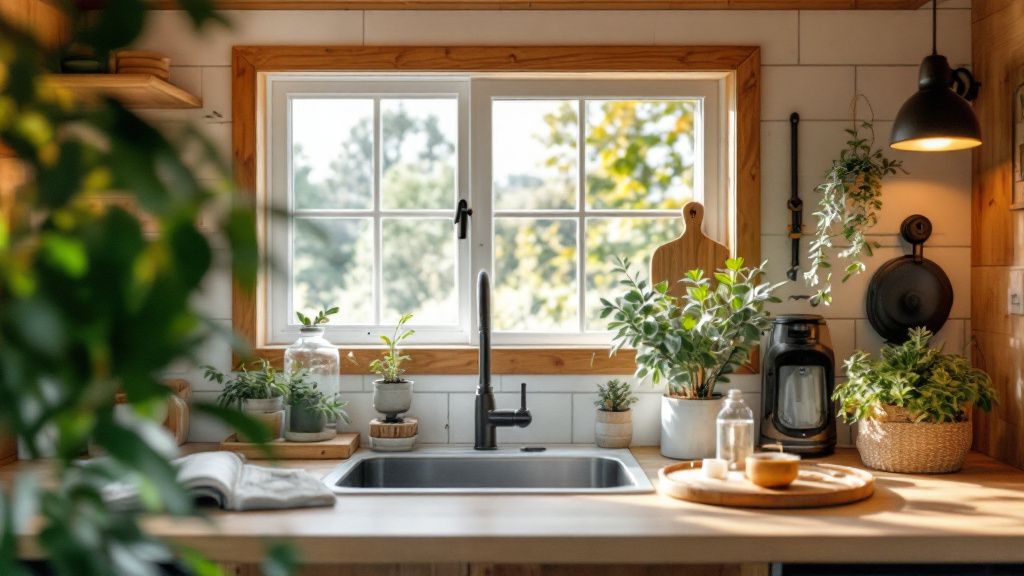
Off-The-Grid Tiny Home Essentials
Crafting an off-the-grid tiny home requires a clear focus on essential systems that ensure self-sufficiency. Key components include solar panels, rainwater collection, and composting toilets, which provide independence from traditional utility networks. These elements are crucial for maintaining the balance between functionality and sustainability in your tiny home designs. By investing in these elements, you create a harmonious living space that values resources and efficiency.
Comparing off-the-grid essentials versus conventional utility setups highlights significant differences in energy consumption and environmental impact. Off-the-grid systems promote tiny house living that's both eco-friendly and cost-effective over time. While traditional setups might provide convenience, they often lack the long-term benefits that sustainable solutions offer. Choosing off-the-grid planning aligns with a commitment to reducing carbon footprints and innovating the tiny house interior designs.
When designing tiny home construction plans, researching the most effective off-the-grid technologies is vital. For tiny house on wheels plans, portable and lightweight systems are essential. With the best tiny house kits, incorporating these off-the-grid essentials becomes more manageable, ensuring your tiny home remains adaptable and environmentally conscious. Through smart choices, your home can offer the freedom and resilience that many seek in a compact, independent lifestyle.





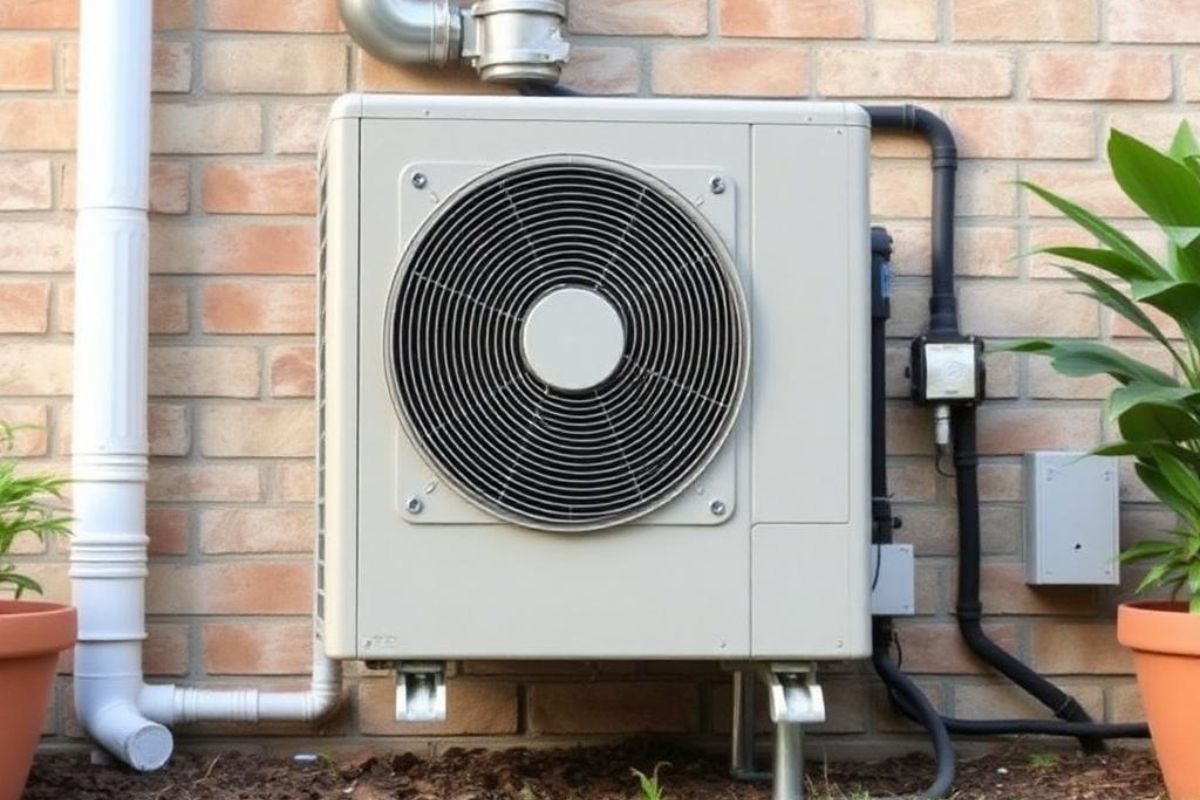
Share: